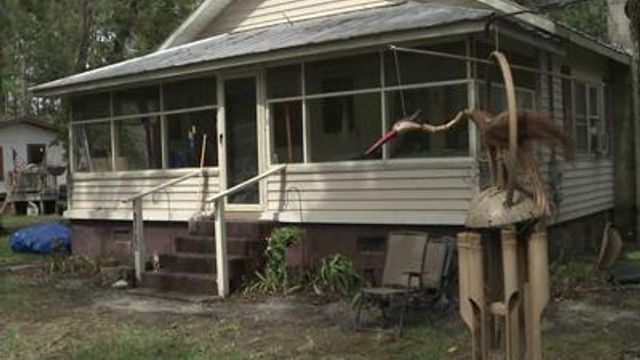Housing relief slow for some Irene victims
FEMA and state emergency officials are working to get temporary housing to victims of Hurricane Irene, but some say they think it's been slow coming.
Posted — UpdatedInside, though, is a very different story.
The house was damaged by flooding from Hurricane Irene last month when the Category 1 storm swept across Pamlico County and the rest of eastern North Carolina.
She and her husband have been sleeping on two 3-inch mattresses that sit atop plywood that covers what used to be her hardwood floor.
Mold forced Brown to tear up flooring and the walls.
"We didn't stay here for the first two weeks," Brown says. "We were just devastated by the mud and water."
It's something Wendy Mayo has seen too much of.
"People right now are living in conditions that you and I probably couldn't even imagine," says Mayo, whose been on a tour of eastern North Carolina helping Irene's victims in whatever way she can.
Some families are living in tents in their back yards. Others are living with mold growing visibly around them.
With these living conditions in mind, the state joined the Federal Emergency Management Agency Friday to announce that temporary housing units will be brought in for qualified local residents as soon as possible.
Qualifications are based on the actual damage of a home, whether other living options are available and how many people are in the family.
As of Friday, 60 families have qualified for the mobile homes in Pamlico and Beaufort counties alone.
Mayo says she is glad to see the help. She just wishes it were available sooner.
"We're on Day 26, 27, and that's too long," she says.
State Emergency Management Director Doug Hoell says part of the delay had to do with the fact that many of the mobile homes would be on the ground in a flood plain.
It wasn't until recently, he says, that FEMA officials got clearance to place the homes, as long as they were elevated 5 feet.
Brown has qualified, but there are other obstacles.
The first was a tree down in her front yard. Brown says FEMA told her it had to be removed before a trailer could be placed on her property.
When she said she would have it removed, inspectors told her power lines were also in the way.
They suggested she stay in temporary housing 20 miles away, but Brown says that's too far away as she works to get her house livable again.
FEMA officials say there are regulations that they have to follow, but they plan to evaluate the land again to see if there is room for the trailer.
• Credits
Copyright 2024 by Capitol Broadcasting Company. All rights reserved. This material may not be published, broadcast, rewritten or redistributed.






